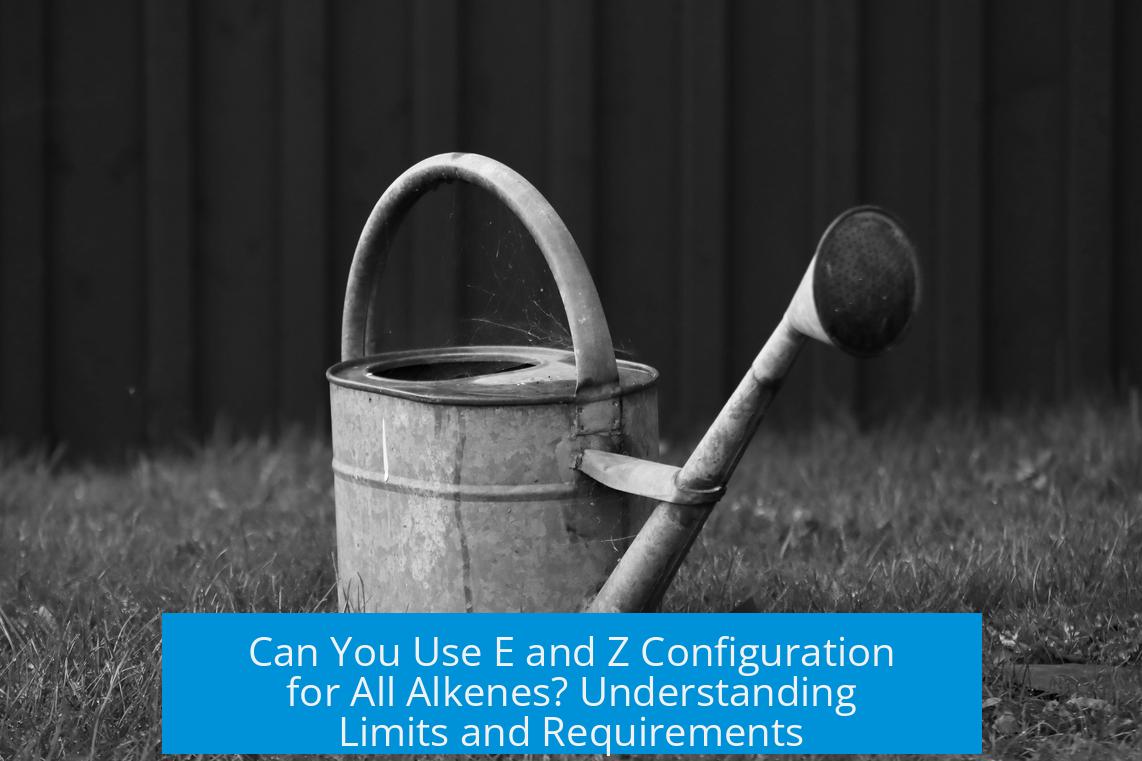Can You Use E and Z Configuration for All Alkenes?

E and Z configurations apply only to alkenes where each carbon in the double bond is bonded to two distinct substituents, allowing priority assignment according to Cahn-Ingold-Prelog rules.
General Applicability of E/Z Configuration
The E/Z system classifies alkene stereochemistry by comparing the priority of groups attached to the double-bonded carbons. It requires that each carbon has two different substituents. If this condition is met, E and Z configurations describe the relative positions of the higher-priority groups.
Limitations and When E/Z Cannot Be Used
The system fails when one or both double-bonded carbons have identical substituents, which prevents assigning clear priorities. For example, compounds such as CH2=C(CH3)Cl or (CH3)2C=CHCl lack sufficient substituent diversity for E/Z notation.
Difference Between E/Z and Cis/Trans Notation
- Cis/trans applies only to alkenes where one substituent on the first carbon is identical to a substituent on the second carbon.
- E/Z is more general, applying to all alkenes with two different substituents on each carbon.
- Cis/trans is less precise and can be ambiguous when substituents are complex.
- E/Z uses Cahn-Ingold-Prelog priority rules, providing clear stereochemical descriptions.
Substituent Requirements for E/Z Assignment
E/Z designation depends on having four different substituents attached to the two carbons of the double bond. In simple alkenes with only hydrogen and carbon substituents, priority distinctions may be impossible, thus E/Z notation cannot be used.
When priority assignments are clear, E/Z is preferred over cis/trans for its accuracy and universality.
Key Takeaways
- E/Z config applies only if both double-bonded carbons have two different substituents.
- Alkenes with identical substituents on a double-bonded carbon cannot have E/Z notation assigned.
- Cis/trans is limited and less precise than E/Z; it applies only to some simple cases.
- E/Z configuration uses rigorous priority rules, making it broadly applicable where substituents differ.
Can E/Z configuration be applied to every alkene?
No. E/Z notation works only if each carbon in the double bond has two different groups attached. When identical groups are present on a carbon, you cannot assign E or Z.
Why can’t E/Z notation be used for alkenes like CH₂=C(CH₃)Cl?
These alkenes have identical substituents on one of the double-bonded carbons, so priorities cannot be assigned clearly. E and Z need distinct substituents on both carbons.
How is E/Z different from cis/trans notation?
Cis/trans applies only when identical groups are on each carbon of the double bond. E/Z uses priority rules and applies to all alkenes with two different substituents on each carbon.
Is E/Z configuration always better than cis/trans?
E/Z is more precise and works in more cases. Cis/trans is limited and considered outdated but still valid when applicable.
Do all alkenes with only carbon and hydrogen allow E/Z naming?
Not always. If the substituents on the double-bonded carbons are all hydrogens or identical, E/Z cannot be assigned due to the lack of different priority groups.





Leave a Comment